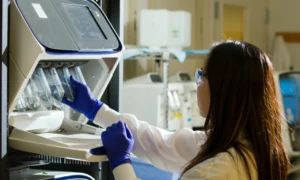The dental crown treatment process typically involves multiple steps, from the initial consultation to the final placement of the crown. Here is a step-by-step breakdown of the dental crown treatment process:

1. Initial Consultation:
- You will have an initial consultation with your dentist to discuss your oral health, concerns, and treatment options.
- If a dental crown is recommended, your dentist will explain the reasons for the recommendation and discuss the procedure in detail.
2. Examination and X-rays:
- Your dentist will perform a thorough examination of the tooth that needs the crown. X-rays may be taken to assess the extent of damage or decay and to check the surrounding bone structure.
3. Treatment Planning:
- Based on the examination and X-rays, your dentist will develop a treatment plan. This includes deciding the type of crown material, any additional treatments needed (such as a root canal), and the overall timeline.
4. Tooth Preparation:
- On the day of the crown preparation, the dentist will numb the area around the tooth to ensure you are comfortable during the procedure.
- The dentist will then remove any decay or damage from the tooth and shape it to create space for the crown. In some cases, a buildup of the core may be necessary for added support.
5. Impressions:
- After tooth preparation, impressions of the tooth and surrounding teeth are taken. These impressions serve as a model for creating a custom crown that matches the shape and size of your natural tooth.
6. Temporary Crown:
- While waiting for the permanent crown to be fabricated (which may take a couple of weeks), a temporary crown is placed to protect the prepared tooth.
- The temporary crown is usually made of acrylic or another temporary material and is not as durable as the final crown.
7. Laboratory Fabrication:
- The impressions are sent to a dental laboratory where skilled technicians create the permanent crown according to the specifications provided by the dentist.
- The crown can be made of various materials, including porcelain, metal, or a combination of both, depending on the dentist’s recommendations and your preferences.
8. Final Placement:
- Once the permanent crown is ready, you will return to the dentist for its placement.
- The dentist will remove the temporary crown, check the fit and color of the permanent crown, and make any necessary adjustments.
- Once satisfied, the permanent crown is cemented or bonded into place.
9. Post-Treatment Care:
- Your dentist will provide instructions on caring for your new crown. This includes maintaining good oral hygiene through regular brushing and flossing.
- It’s important to avoid chewing on hard or sticky foods immediately after getting a new crown to prevent damage.
10. Follow-up Appointments:
- Your dentist may schedule follow-up appointments to monitor the health of the crowned tooth and address any concerns.
It’s important to communicate openly with your dentist, follow their instructions for care, and attend follow-up appointments to ensure the success and longevity of the dental crown.





























